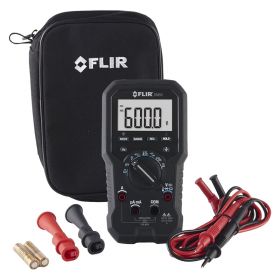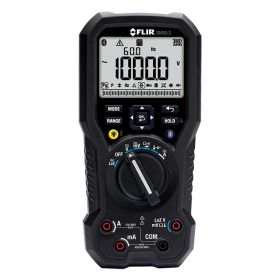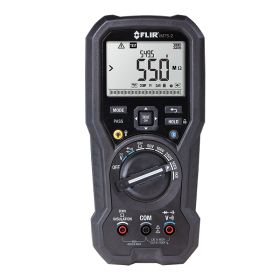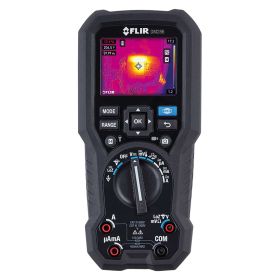The store will not work correctly in the case when cookies are disabled.
About Digital Multimeters
While traditional multimeters have used analogue displays which involved a needle moving across a scale, they're generally waning in popularity
compared to digital multimeters (DMM).
Digital multimeters offer several advantages over their analogue counterparts. They're generally much more varied in the number of different
parameters they can measure, have built-in advanced features and generate numerical value results which are much more accurate than tracking parameter
fluctuations on an analogue scale.
The most basic digital multimeters generally are used for measuring voltage, current, and resistance levels. Upgraded DMMs often contain additional
measurement capabilities, and can be used to test such things as temperature or capacitance. Electrical professionals often find their multimeter is
the one tool they turn to the most, simply because of the versatility of the device and its ability to be used in a wide variety of different electrical applications.
Most digital variety multimeters are also encased in incredibly small bodies - many of them are even pocket-sized, and can still be used for
carrying out measurements of electrical and other properties. They're also generally brimming with advanced features such as autoranging, data
hold, and MAX/MIN measurements.
Autoranging digital multimeters are much safer than manual ranging devices. Each multimeter - depending on the make and model - will have an
integrated range built into the device. This means that the DMM is capable of measuring up to the upper threshold of that range, but once a
manual ranging multimeter passes this threshold, it will display 'OL', which means it has exceeded its capabilities. Autoranging multimeters
are made to automatically adjust their range to the targeted application, and even when they move outside a range they will automatically adjust
themselves to make sure that the user still gets a numerical reading. It is important to consider exactly whether an autoranging or manual ranging
device applies to your needs when buying a multimeter - manual ranging multimeters may not have the ability to adjust their range automatically,
but they are more efficient at stopping ghost voltage readings.
A common DMM generally consists of an LCD screen encased into a tester that features a rotary dial on the front. Users use this rotary dial to
select between different test procedures and features, and the results are relayed automatically to the LCD screen when taken. Using either internal
data storage or a data hold mode it's possible to either permanently store this data (and download it later to a PC using various connections) or hold
data on screen temporarily while it is jotted down or shown to someone else. Most digital multimeters also feature ports for test leads, and many
also ship as standard which is applicable to test leads for carrying out the tests that a particular digital multimeter can perform.
 FLIR DM66 True-RMS Digital Multimeter
FLIR DM66 True-RMS Digital Multimeter £214.80 £179.00
£214.80 £179.00
 Free UK DeliveryTeledyne FLIR DM93-2 Industrial Digital Multimeter£406.80 £339.00
Free UK DeliveryTeledyne FLIR DM93-2 Industrial Digital Multimeter£406.80 £339.00
 Free UK DeliveryTeledyne FLIR IM75-2 Insulation Tester & Digital Multimeter£658.80 £549.00
Free UK DeliveryTeledyne FLIR IM75-2 Insulation Tester & Digital Multimeter£658.80 £549.00
 Free UK DeliveryFLIR DM286 Industrial Thermal Imaging Multimeter with IGM£898.80 £749.00
Free UK DeliveryFLIR DM286 Industrial Thermal Imaging Multimeter with IGM£898.80 £749.00

